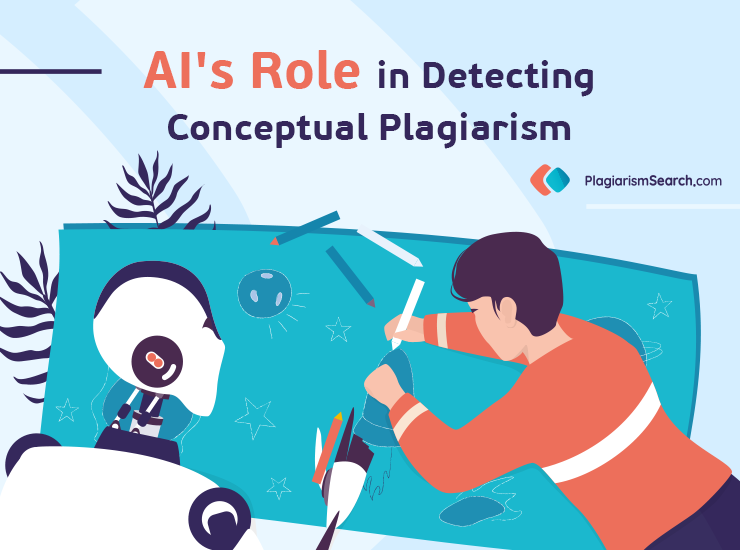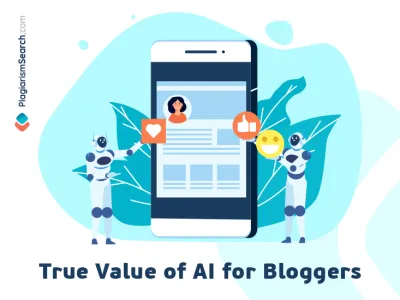
Beyond Duplication: AI Involvement in Identifying Conceptual Plagiarism
It seems to be as easy as ABC. This text is truly original, while that one borrows ideas and lacks citations. You hope that any plagiarism detection tool, even the one available online for free, can help you see whether the author respects the principles of academic integrity and authenticity in writing. However, it might be much more complicated to differentiate between original and plagiarized ideas. What can you do in case it smells fishy but you cannot prove that there is hidden plagiarism in the ideas presented as brand new? For sure, it is high time to make use of the unlimited opportunities AI gives! If it contributes greatly to terrific spreading of plagiarism, then why not make it serve an opposite purpose? Luckily, you can involve AI into identifying violations of intellectual property rights which otherwise could be unprotected.
Instances of Conceptual Plagiarism
There are few writing assignments which do not rely on the ideas of others. It is a generally used technique to contrast one’s own ideas to the thoughts of other authors. This is an effective way to develop some new idea and pay special attention to the nuances previously omitted. It is a common practice of researchers, students, and even professional writers. Citing publications, referring to the previously written articles, excerpts of scientific works, and passages of studies is absolutely acceptable if it is done in compliance with the citation standards. It is important to treat intellectual property with due respect; however, this rule is frequently neglected. Students and researchers used to copy the passages or separate sentences from other papers and pretend that they were original. Now, that is not possible because of effective plagiarism check. A new strategy is to copy the structure or ideas instead of exact wording and conventional plagiarism checkers fail in detecting the issues.
So, what do writers and researchers do to hide plagiarism and steal the ideas so that no one could notice?
- Rewording the text with no reference to the original ideas
Stating the main ideas in your own words, you do paraphrasing and change how the text is presented. Without a bibliography, you get research which looks original but it is not. Only being accompanied with a list of sources, such texts can be treated as authentic. If you state that the ideas originated from you, you are a thief.
- Recycling previous works
Self-plagiarism is equal to plagiarism. You will get punished if it becomes evident that you are using the same work twice. A brand new idea is different from the one previously used in experiments, articles, or research.
- Borrowing ideas by translating the text
Even if the original source is written in a foreign language, you are obliged to cite it as a bibliographic reference. Each quote should have an indication of the author, title of the source, year of publication, and language. Copyright must not be neglected even if you are paraphrasing the ideas written in French, Spanish, Japanese, or any other language.
- Taking the text from the scanned images or charts
AI and Conceptual Plagiarism
Digitalization has taken over the entire world and new technologies are gaining more and more popularity in different spheres, including writing. Automating complex processes, AI streamlines the task of detecting plagiarism owing to the following features it has:
- Scanning texts at a profound level
It sounds unbelievable but AI can trace not only the exact content copied from other sources, but also the similarities in phrase formation and meaning. Reworded content is no longer a trick that can mislead the researchers and checkers.
- Advanced recognition of cheating
AI does effective search for the content with sophisticated cheating techniques, such as including add symbols, foreign symbols which look similar to those from the native language, and others. AI-based checker can flag such plagiarism and leave no chances for the cheaters.
- Checking for plagiarism as a result of translation
Modern AI tools enable search for translated ideas; so, you may specify the languages to trace and do the scanning to see if any thoughts are stolen from translated articles.
- Using the feature of optical character recognition
AI allows reading the characters not only from the electronic sources but also from images, printed documents, and physical papers.
Genuine Influence vs. Stealing and Imitation: Challenges and Potential of AI
AI software and cloud computing make it possible to work proficiently and apply advanced algorithms to give amazing results. Regular scanners are no longer as reliable as they used to be and there is an urgent need in detecting plagiarism at a deep level. Duplications in students’ works, for example, are still a common practice. AI gives them unlimited opportunities to plagiarize owing to the latest paraphrasing techniques online, but at the same time it helps professors detect such cheating.
Benefits of AI-Based Plagiarism Detection
- High accuracy
- High speed of text processing
- A combination of plagiarism detection methods: processing natural language, machine learning, and others
- Advanced detection of cross-language plagiarism
- Identification of wrong references and improper citing
- Analysis of images
- Capacity of detecting content spinning, paraphrased content, AI-generated content, and translation-based cheating
- Provision of instant feedback
- User-friendly interface
- Customized algorithms of plagiarism detection
- Integration with traditional checkers
- Continuous improvements
What is still needed is detection of content in different domains, addressing moral and ethical concerns, and leveraging profound learning so that the culture of integrity, ethics, and originality is fostered effectively.
No doubt, the AI technologies will keep evolving and there methods of detecting plagiarism will be more sophisticated. Previously undetectable types of plagiarism can be detected now. Such tools as plagiarismsearch.com get additional benefits owing to the advancements in technologies. At the same time, the techniques of plagiarizing will keep developing as well. Facing huge challenges, the plagiarism checkers enter a new phase and gain new capabilities. A balanced approach that engages both high quality traditional methods and AI tools in plagiarism detection can be the best in upholding the academic integrity. So, the game is going on!



